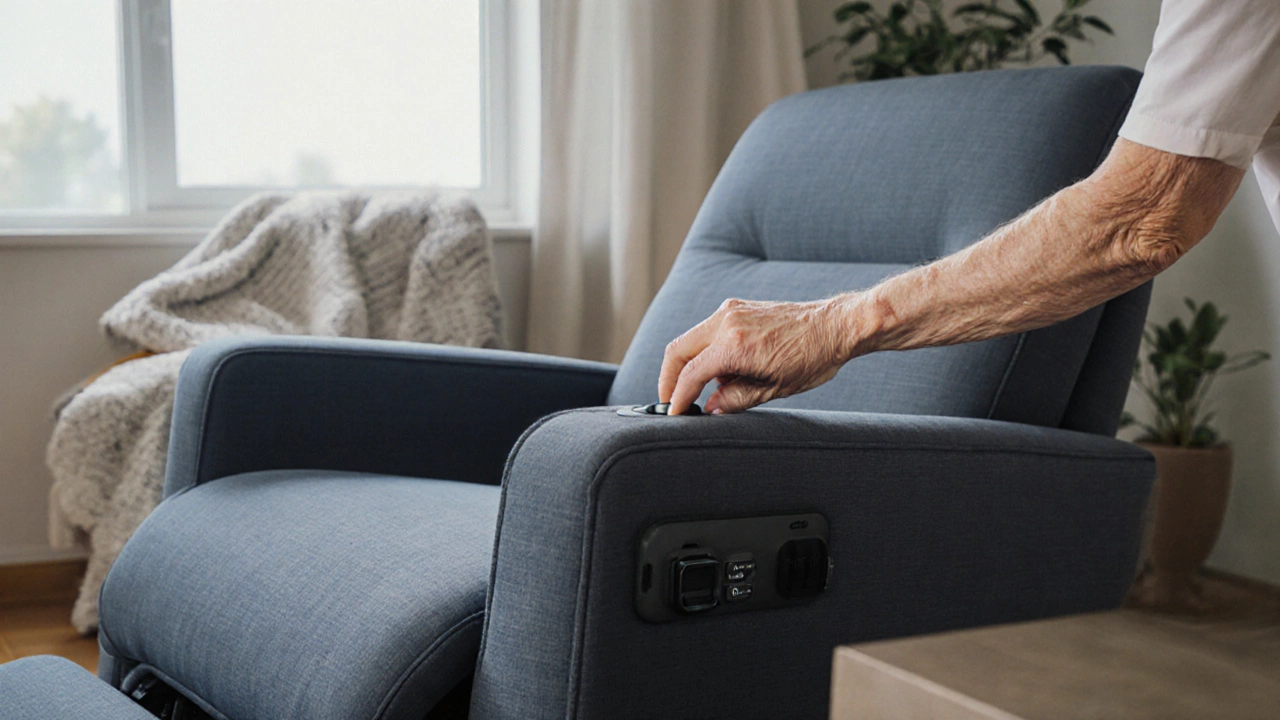Medicare Recliner Coverage Calculator
Check if Your Recliner Might Be Covered
Answer these questions to see if your situation qualifies for Medicare coverage of a recliner as durable medical equipment (DME).
Coverage Result:
When it comes to senior comfort, Medicare is the federal health insurance program for people 65 and older, as well as certain younger individuals with disabilities often sparks questions about what furniture it will actually pay for. The short answer? A recliner isn’t automatically covered, but under specific circumstances it can be classified as Durable Medical Equipment (DME) and become eligible for reimbursement.
Key Takeaways
- Medicare only covers recliners if a doctor prescribes them as medically necessary DME.
- Coverage relies on Medicare PartB criteria, not PartA or supplemental plans.
- Documentation, proper supplier enrollment, and a prior‑authorization claim are essential steps.
- If Medicare won’t pay, Medicaid, VA benefits, or private insurers may fill the gap.
- Understanding cost‑sharing (20% coinsurance) helps seniors budget for the purchase.
How Medicare Defines Durable Medical Equipment
Under Medicare PartB, DME includes items that:
- Are prescribed by a qualified health professional.
- Can withstand repeated use over an extended period.
- Are primarily used to treat a medical condition, not for general comfort.
Common examples are walkers, hospital beds, and oxygen equipment. A recliner can join this list-but only when it meets the strict medical‑necessity test.
When a Recliner Becomes a “Medical” Recliner
Doctors may prescribe a recliner for seniors facing:
- Severe arthritis or joint pain that makes getting in/out of a standard chair painful.
- Limited mobility that requires a powered lift mechanism to stand safely.
- Respiratory conditions where an elevated, reclined position eases breathing (e.g., COPD, sleep apnea).
- Chronic skin conditions that benefit from frequent position changes to prevent pressure ulcers.
In each scenario, the physician must document why a regular chair won’t suffice. The note should reference specific diagnoses, functional limitations, and the intended therapeutic benefit of the recliner.

Medicare PartB Coverage Criteria for Recliners
Even with a prescription, the following rules apply:
- Supplier enrollment: The recliner must be purchased from a Medicare‑enrolled DME supplier. Non‑enrolled sellers can’t bill Medicare.
- Prior‑authorization: Some Medicare Advantage (MA) plans require a prior‑authorization request before the claim is processed.
- Coinsurance: Beneficiaries are responsible for 20% of the allowable amount, after any supplemental coverage.
- Maximum benefit: Medicare doesn’t set a specific dollar limit for recliners, but the amount reimbursed must be “reasonable and customary.”
If any of these boxes are unchecked, the claim will be denied, and the senior will have to cover the full price.
Step‑by‑Step: Getting a Medicare‑Approved Recliner
- Doctor’s evaluation: Schedule an appointment where the physician assesses mobility, pain levels, and any respiratory or skin issues.
- Obtain a written prescription: The note must include diagnosis codes (ICD‑10) and a clear statement that a recliner is medically necessary.
- Find a Medicare‑enrolled DME supplier: Use the Medicare Provider Search tool or ask the doctor’s office for referrals.
- Submit a claim: The supplier files a claim to Medicare PartB using the prescription and supporting documentation.
- Review the Medicare Explanation of Benefits (EOB): Check for approval, the allowed amount, and your 20% coinsurance.
- Pay your share: Arrange payment with the supplier. Some suppliers offer financing or sliding‑scale options for seniors.
Tip: Keep copies of every document-prescription, claim form, and EOB. If Medicare denies the claim, you have the right to appeal within 60days.
Alternatives When Medicare Won’t Cover the Recliner
If the DME pathway feels too cumbersome, consider these options:
| Program | Eligibility | Coverage Conditions | Typical Out‑of‑Pocket Cost |
|---|---|---|---|
| Medicare PartB | 65+ or disabled | Medical necessity, enrolled DME supplier | 20% coinsurance |
| Medicaid | Low‑income seniors (varies by state) | Often covers basic recliners as assistive devices | Usually $0‑$100 |
| VA Health Care | Veteran status | Can approve powered lift chairs for mobility issues | Often $0 |
| Medicare Advantage (MA) | Enrollment in private MA plan | Plan‑specific rules; many require prior‑auth | Varies; some plans cover 100% |
| Private Health Insurance | Depends on policy | Usually covered under “medical equipment” riders | Deductible + coinsurance |
Many states also run programs that provide low‑cost or free recliners for seniors with mobility challenges. Contact your local Area Agency on Aging for more details.
Cost‑Saving Tips and Low‑Price Options
- Look for “medical‑grade” recliners that meet DME specs but are sold at discount warehouse outlets.
- Consider refurbished models; they’re often inspected and still qualify for Medicare if they meet safety standards.
- Some charities and senior‑service organizations accept donations of gently used recliners and redistribute them.
- Ask the DME supplier about bundled financing that spreads the 20% coinsurance over 12‑24 months.
Remember, the cheapest option isn’t always the best. A recliner that fails to lift properly can lead to falls, which cost far more in medical bills.
Common Pitfalls and How to Avoid Them
Even seasoned caregivers stumble over these mistakes:
- Skipping the prescription: Without a doctor’s note, Medicare will reject the claim outright.
- Buying from a non‑enrolled retailer: The claim will be denied, and you’ll be on the hook for the entire price.
- Assuming all recliners are “medical”: Only models with lift mechanisms, tilt‑in‑space, or pressure‑relief features qualify under most medical‑necessity criteria.
- Ignoring the appeal window: You have 60 days to request a redetermination if Medicare says no.
- Overlooking supplemental coverage: Many Medigap plans cover the 20% coinsurance, reducing your out‑of‑pocket spend.
By checking each box before you buy, you’ll keep the process smooth and avoid surprise bills.
Quick Reference Checklist
- Doctor’s prescription with ICD‑10 code.
- Medicare‑enrolled DME supplier.
- Confirm PartB coverage for the specific recliner model.
- Submit claim and monitor the EOB.
- Appeal within 60days if denied.
Frequently Asked Questions
Does Medicare cover any recliner I want?
No. Medicare only covers recliners that are prescribed as medically necessary DME and purchased from an enrolled supplier. Regular living‑room recliners are excluded.
What diagnoses qualify a senior for a medical recliner?
Common qualifying conditions include severe arthritis, limited mobility requiring a lift mechanism, chronic respiratory diseases that benefit from an elevated position, and skin conditions at risk of pressure ulcers. The physician must link the diagnosis to the need for a recliner.
How much will I pay out of pocket?
Medicare PartB requires a 20% coinsurance of the allowable amount. If you have a Medigap plan, it may cover that 20%. Otherwise, you’re responsible for the percentage.
Can I use a VA benefit if I’m a veteran?
Yes. The VA often authorizes powered lift chairs for veterans with mobility impairments. You’ll need a VA‑approved prescription, and the VA will usually cover the full cost.
What’s the appeal process if Medicare denies my claim?
File a redetermination request within 60days of the denial notice. Include the original prescription, a letter from the physician explaining medical necessity, and any supporting test results. If the redetermination fails, you can request a reconsideration by an external review organization.

